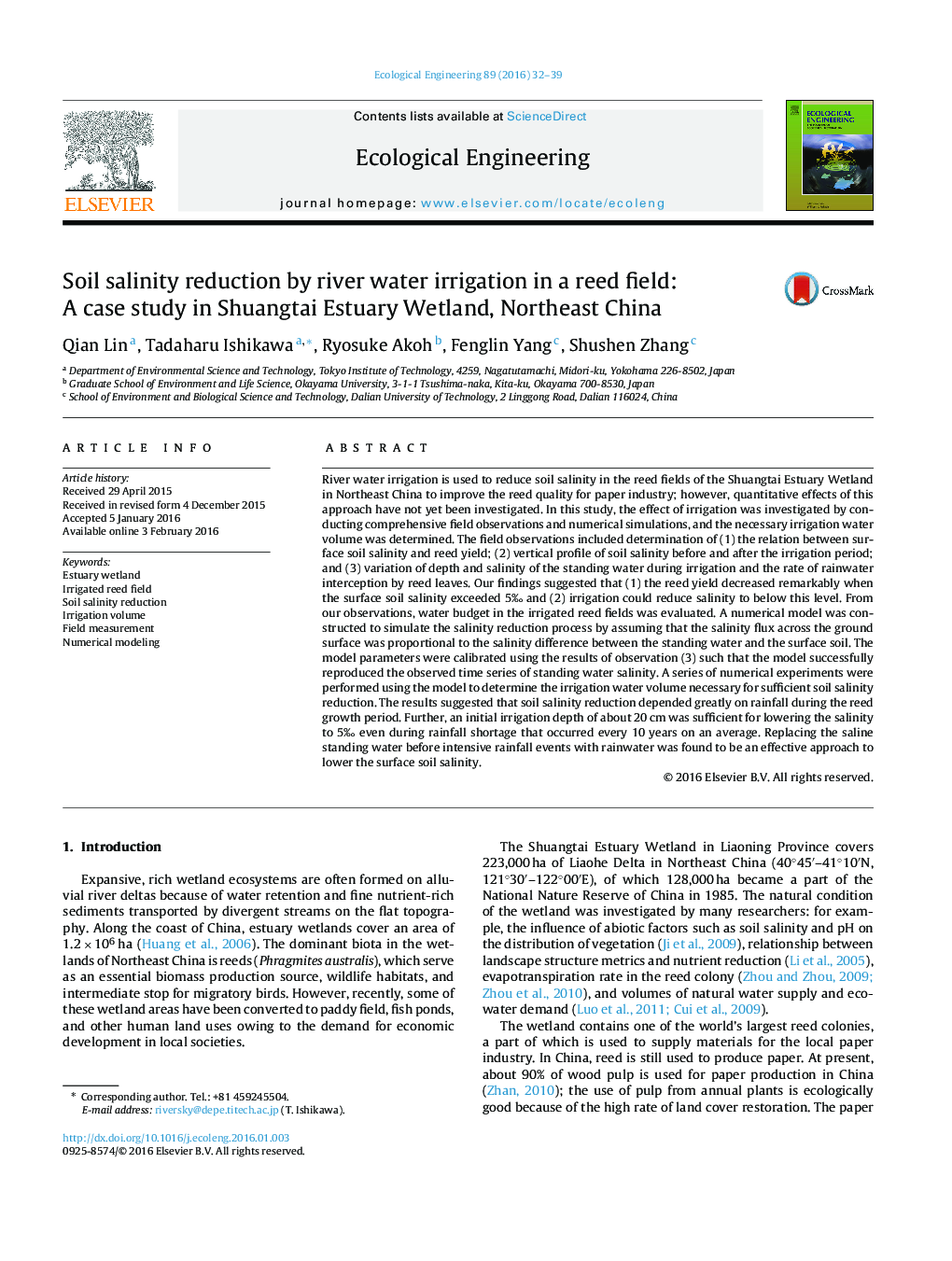| کد مقاله | کد نشریه | سال انتشار | مقاله انگلیسی | نسخه تمام متن |
|---|---|---|---|---|
| 4388744 | 1618010 | 2016 | 8 صفحه PDF | دانلود رایگان |
River water irrigation is used to reduce soil salinity in the reed fields of the Shuangtai Estuary Wetland in Northeast China to improve the reed quality for paper industry; however, quantitative effects of this approach have not yet been investigated. In this study, the effect of irrigation was investigated by conducting comprehensive field observations and numerical simulations, and the necessary irrigation water volume was determined. The field observations included determination of (1) the relation between surface soil salinity and reed yield; (2) vertical profile of soil salinity before and after the irrigation period; and (3) variation of depth and salinity of the standing water during irrigation and the rate of rainwater interception by reed leaves. Our findings suggested that (1) the reed yield decreased remarkably when the surface soil salinity exceeded 5‰ and (2) irrigation could reduce salinity to below this level. From our observations, water budget in the irrigated reed fields was evaluated. A numerical model was constructed to simulate the salinity reduction process by assuming that the salinity flux across the ground surface was proportional to the salinity difference between the standing water and the surface soil. The model parameters were calibrated using the results of observation (3) such that the model successfully reproduced the observed time series of standing water salinity. A series of numerical experiments were performed using the model to determine the irrigation water volume necessary for sufficient soil salinity reduction. The results suggested that soil salinity reduction depended greatly on rainfall during the reed growth period. Further, an initial irrigation depth of about 20 cm was sufficient for lowering the salinity to 5‰ even during rainfall shortage that occurred every 10 years on an average. Replacing the saline standing water before intensive rainfall events with rainwater was found to be an effective approach to lower the surface soil salinity.
Journal: Ecological Engineering - Volume 89, April 2016, Pages 32–39
